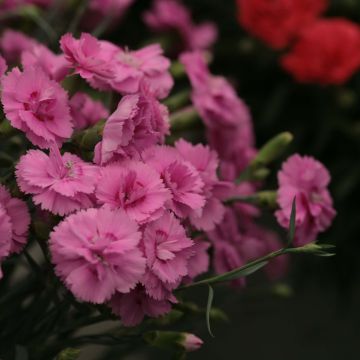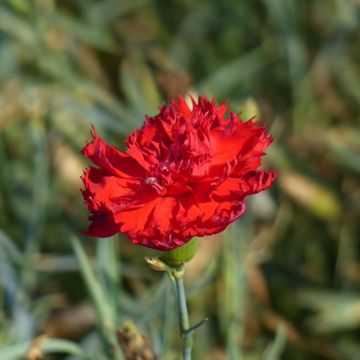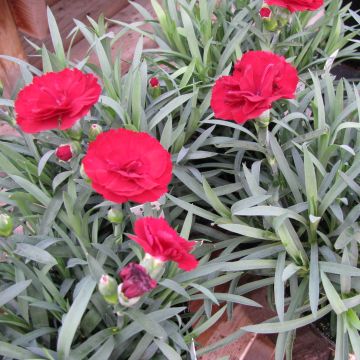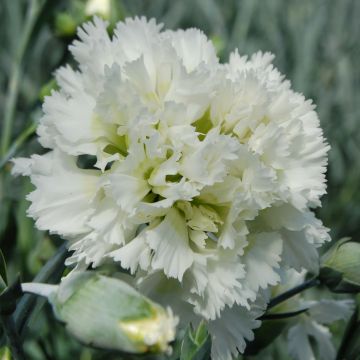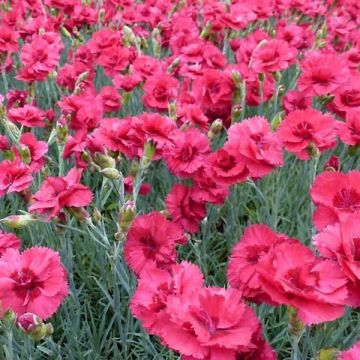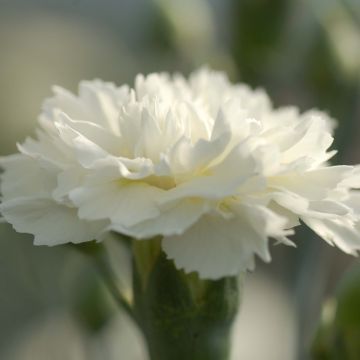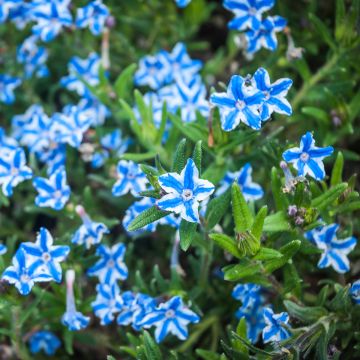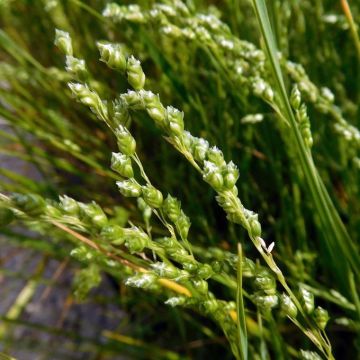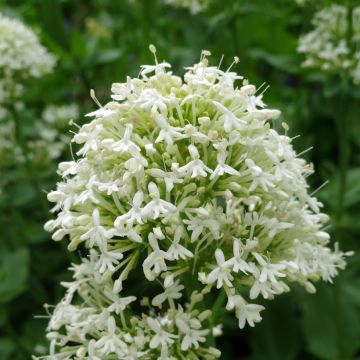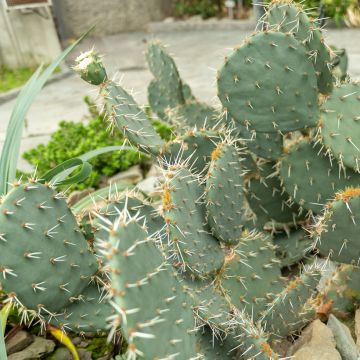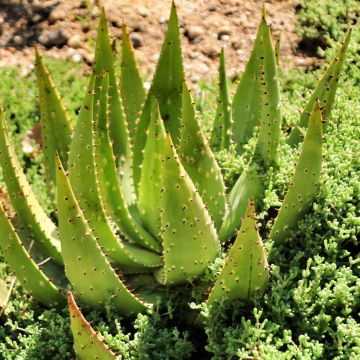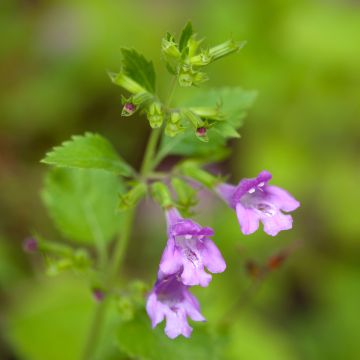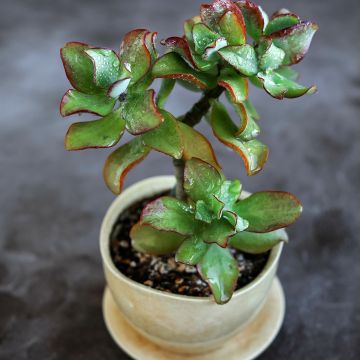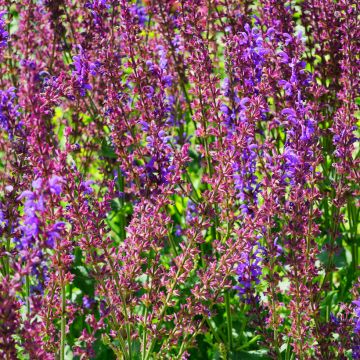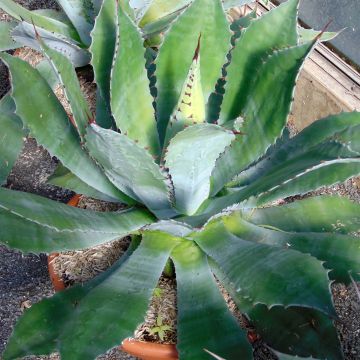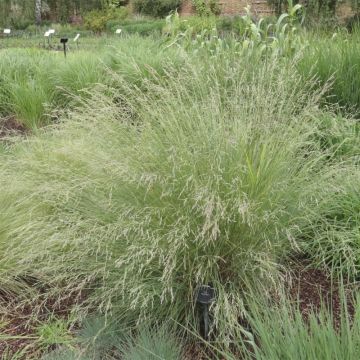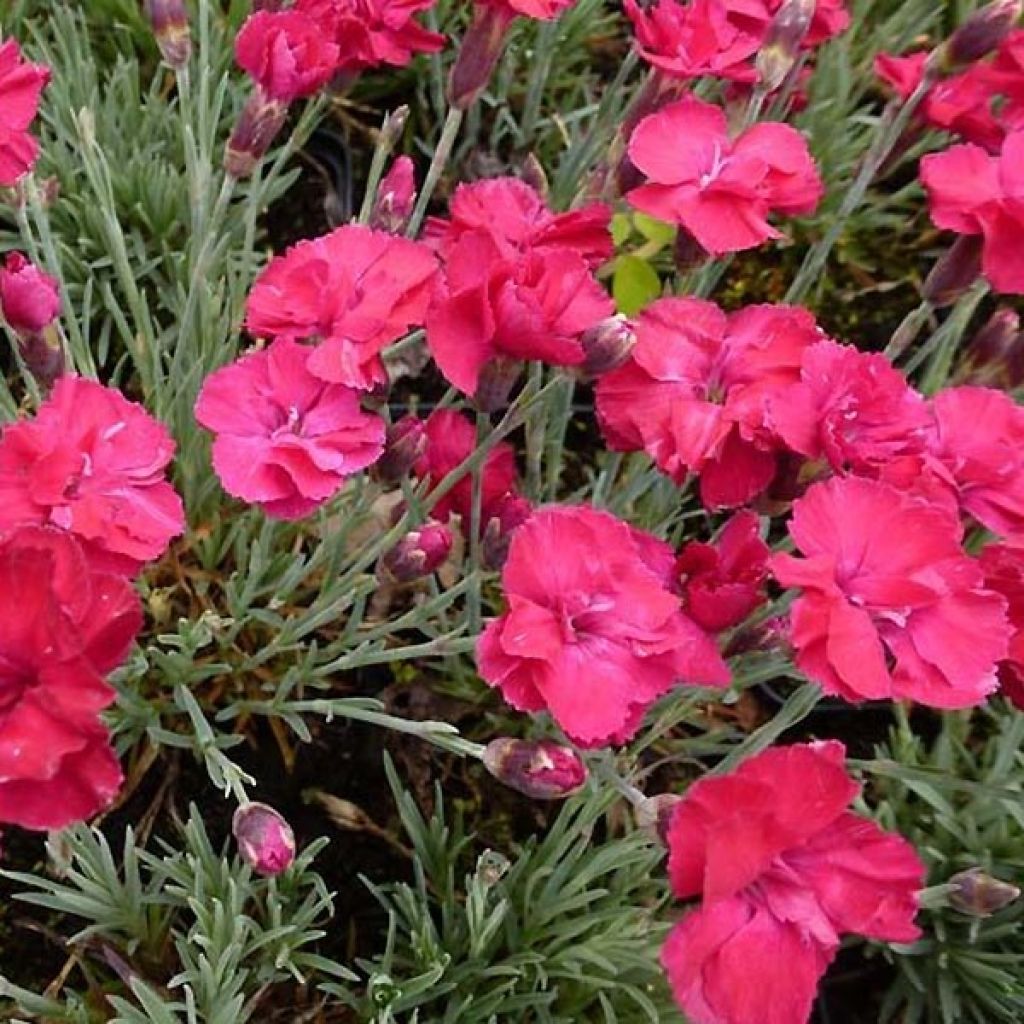

Dianthus gratianopolitanus Bombardier - Oeillet de pentecôte
Dianthus gratianopolitanus Bombardier
Dianthus gratianopolitanus Bombardier
Cheddar Pink, Cliff pink, Clove pink, Mountain pink, Sweet pink
This item cannot be shipped to the selected country
Delivery charge from €5.90
More information
Schedule delivery date,
and select date in basket
This plant carries a 12 months recovery warranty
More information
We guarantee the quality of our plants for a full growing cycle, and will replace at our expense any plant that fails to recover under normal climatic and planting conditions.
From €5.90 for pickup delivery and €6.90 for home delivery
Express home delivery from €8.90.
Does this plant fit my garden?
Set up your Plantfit profile →
Description
Dianthus gratianopolitanus 'Bombardier' is a particularly floriferous and fragrant variety of miniature carnation. Forming a dense cushion, this variety is covered with a myriad of small vivid red double flowers that are pleasantly scented during the summer. Its delicate foliage persists more or less during winter, adding decorative touches of green-blue to borders and rockeries. Easy to grow, combining generosity, an undemanding nature, and delicacy, this small plant will thrive in well-drained soil. It can also be grown on a patio or balcony, creating adorable pots that are both colourful and fragrant from June to October.
'Bombardier' belongs to the Caryophyllaceae family. It comes from Dianthus gratianopolitanus, also known as the blue-grey carnation, Grenoble carnation, or Pentecost carnation, native to Europe and Asia. This carnation has a fast growth rate. Its adult size will not exceed 15cm (6in) in height with a spread of 40cm (16in) or more. This plant forms a small prostrate cushion with a tapetum stump. Its linear, semi-evergreen, and leathery leaves are a beautiful grey-green colour. The flowering period lasts for 3 months, starting in May and continuing until July if the soil is not too dry. The plant is then covered with small fiery red double flowers composed of toothed petals. They appear at the top of generally uniflorous stiff and leafy stems. The flowers are highly fragrant.
'Bombardier' is suitable for embankments and rockeries. It prefers a sunny spot and well-drained soils. It tolerates poor and chalky soils. It can be accompanied by other flowering cushions such as helianthemums, silenes, dwarf artemisia (Artemisia lanata), wall bellflower, Caucasian rock cress, Phlox subulata, Delosperma cooperi, Erigeron karvinskianus, and bloody cranesbill (Geranium sanguineum). This plant looks pretty between the stones of a wall or pavement, or in a garden pot. It can also be planted en masse along pathways, or to highlight the edge of a flower bed where it forms beautiful, vivid red and fragrant carpets throughout the summer. It adapts very well to cultivation in pots and containers, provided that watering is more frequent and regular fertilisation is applied.
Report an error about the product description
Dianthus gratianopolitanus Bombardier in pictures
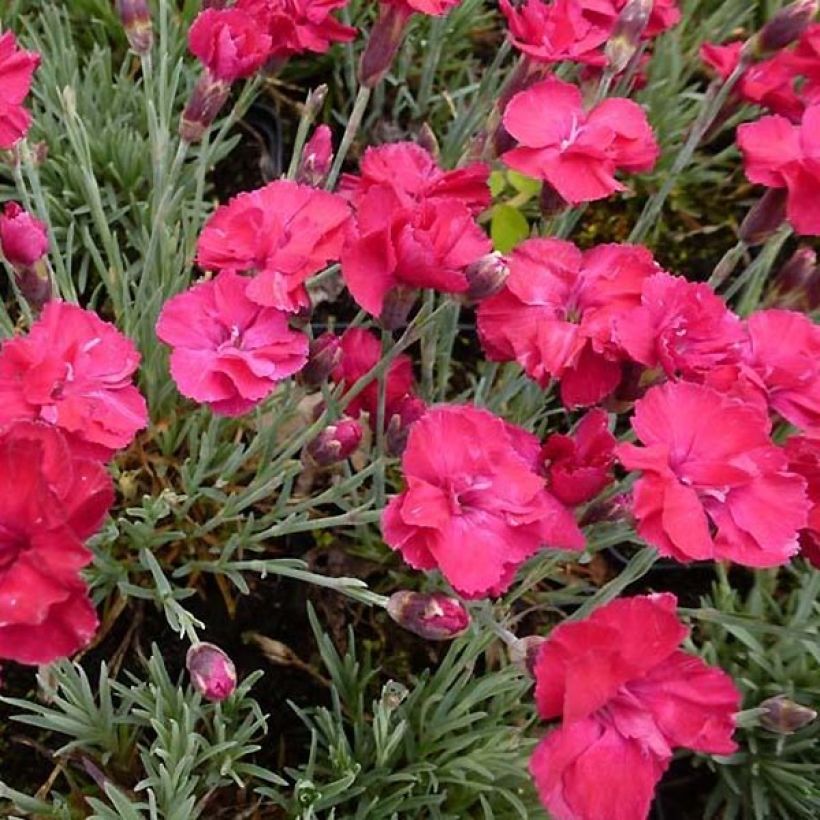

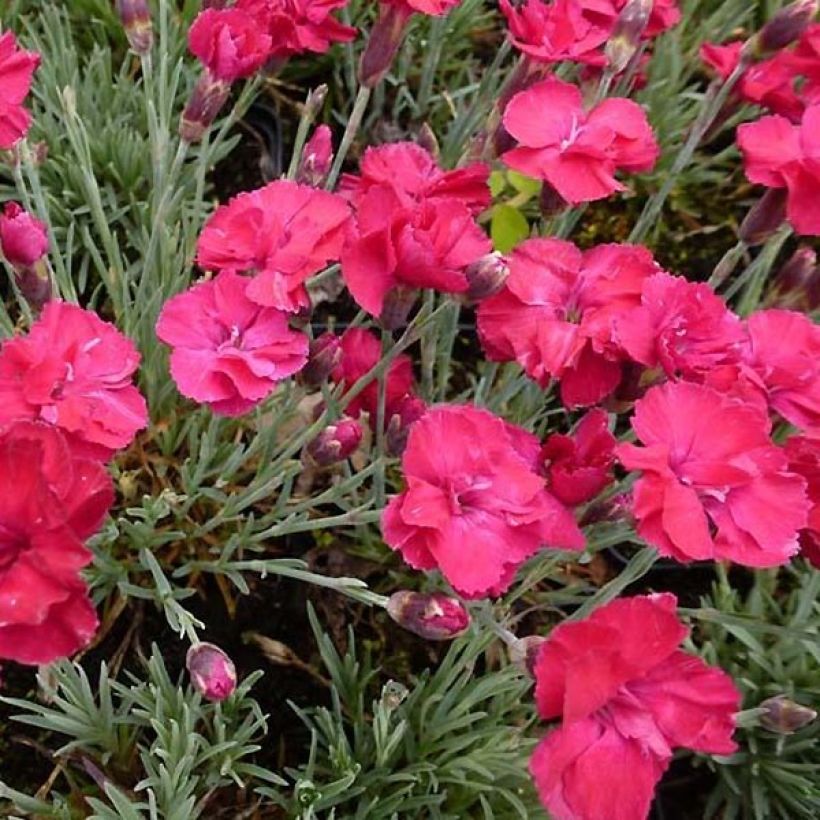

Flowering
Foliage
Plant habit
Botanical data
Dianthus
gratianopolitanus
Bombardier
Caryophyllaceae
Cheddar Pink, Cliff pink, Clove pink, Mountain pink, Sweet pink
Cultivar or hybrid
Other Dianthus - Pinks
Planting and care
Plant from October to March in well-draining, even dry, soil. It will even grow in poor and rocky soil enriched with compost. Plant in full sun. In heavy soil or in too humid regions, mix compost, coarse sand, and gravel into your garden soil and plant in raised beds. Don't forget to place gravel at the bottom of the hole for good drainage. Remove faded flowers as they appear to promote new blooms and maintain a compact habit for the plant. Apply fertiliser in spring. Watch out for slugs. Monitor soil that retains winter moisture.
Planting period
Intended location
Care
-
, onOrder confirmed
Reply from on Promesse de fleurs
Mediterranean perennials
Haven't found what you were looking for?
Hardiness is the lowest winter temperature a plant can endure without suffering serious damage or even dying. However, hardiness is affected by location (a sheltered area, such as a patio), protection (winter cover) and soil type (hardiness is improved by well-drained soil).

Photo Sharing Terms & Conditions
In order to encourage gardeners to interact and share their experiences, Promesse de fleurs offers various media enabling content to be uploaded onto its Site - in particular via the ‘Photo sharing’ module.
The User agrees to refrain from:
- Posting any content that is illegal, prejudicial, insulting, racist, inciteful to hatred, revisionist, contrary to public decency, that infringes on privacy or on the privacy rights of third parties, in particular the publicity rights of persons and goods, intellectual property rights, or the right to privacy.
- Submitting content on behalf of a third party;
- Impersonate the identity of a third party and/or publish any personal information about a third party;
In general, the User undertakes to refrain from any unethical behaviour.
All Content (in particular text, comments, files, images, photos, videos, creative works, etc.), which may be subject to property or intellectual property rights, image or other private rights, shall remain the property of the User, subject to the limited rights granted by the terms of the licence granted by Promesse de fleurs as stated below. Users are at liberty to publish or not to publish such Content on the Site, notably via the ‘Photo Sharing’ facility, and accept that this Content shall be made public and freely accessible, notably on the Internet.
Users further acknowledge, undertake to have ,and guarantee that they hold all necessary rights and permissions to publish such material on the Site, in particular with regard to the legislation in force pertaining to any privacy, property, intellectual property, image, or contractual rights, or rights of any other nature. By publishing such Content on the Site, Users acknowledge accepting full liability as publishers of the Content within the meaning of the law, and grant Promesse de fleurs, free of charge, an inclusive, worldwide licence for the said Content for the entire duration of its publication, including all reproduction, representation, up/downloading, displaying, performing, transmission, and storage rights.
Users also grant permission for their name to be linked to the Content and accept that this link may not always be made available.
By engaging in posting material, Users consent to their Content becoming automatically accessible on the Internet, in particular on other sites and/or blogs and/or web pages of the Promesse de fleurs site, including in particular social pages and the Promesse de fleurs catalogue.
Users may secure the removal of entrusted content free of charge by issuing a simple request via our contact form.
The flowering period indicated on our website applies to countries and regions located in USDA zone 8 (France, the United Kingdom, Ireland, the Netherlands, etc.)
It will vary according to where you live:
- In zones 9 to 10 (Italy, Spain, Greece, etc.), flowering will occur about 2 to 4 weeks earlier.
- In zones 6 to 7 (Germany, Poland, Slovenia, and lower mountainous regions), flowering will be delayed by 2 to 3 weeks.
- In zone 5 (Central Europe, Scandinavia), blooming will be delayed by 3 to 5 weeks.
In temperate climates, pruning of spring-flowering shrubs (forsythia, spireas, etc.) should be done just after flowering.
Pruning of summer-flowering shrubs (Indian Lilac, Perovskia, etc.) can be done in winter or spring.
In cold regions as well as with frost-sensitive plants, avoid pruning too early when severe frosts may still occur.
The planting period indicated on our website applies to countries and regions located in USDA zone 8 (France, United Kingdom, Ireland, Netherlands).
It will vary according to where you live:
- In Mediterranean zones (Marseille, Madrid, Milan, etc.), autumn and winter are the best planting periods.
- In continental zones (Strasbourg, Munich, Vienna, etc.), delay planting by 2 to 3 weeks in spring and bring it forward by 2 to 4 weeks in autumn.
- In mountainous regions (the Alps, Pyrenees, Carpathians, etc.), it is best to plant in late spring (May-June) or late summer (August-September).
The harvesting period indicated on our website applies to countries and regions in USDA zone 8 (France, England, Ireland, the Netherlands).
In colder areas (Scandinavia, Poland, Austria...) fruit and vegetable harvests are likely to be delayed by 3-4 weeks.
In warmer areas (Italy, Spain, Greece, etc.), harvesting will probably take place earlier, depending on weather conditions.
The sowing periods indicated on our website apply to countries and regions within USDA Zone 8 (France, UK, Ireland, Netherlands).
In colder areas (Scandinavia, Poland, Austria...), delay any outdoor sowing by 3-4 weeks, or sow under glass.
In warmer climes (Italy, Spain, Greece, etc.), bring outdoor sowing forward by a few weeks.



































